Category: Book Reviews
The Pillars of the Earth – Ken Follet
Water for Elephants – Sam Gruen
Water for Elephants
Sara Gruen
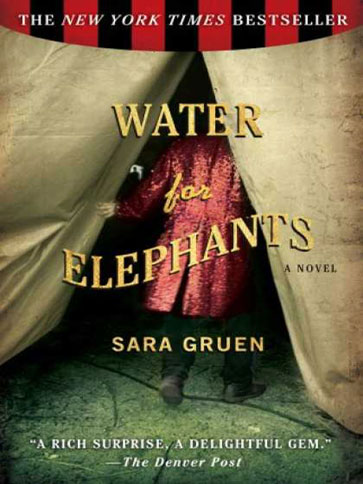 A 90-year-old man─or is he 93?─narrates the story of his one summer as a veterinarian with the Benzini Brothers Most Spectacular Show on Earth during the summer of 1931 in depression-era America. Jacob Jankowski resides in an assisted living home with other elderly people, many of whom require more medical attention than he. He is quite mentally astute for his age, yet because of his age, most of the people in charge of the facility treat him as mentally incompetent, all but Rosemary, a forty-seven-year-old nurse, who treats him and the rest of the patients/residents with the loving care, dignity, and respect they deserve as human beings. But she is moving away and will be quitting the facility, which in the end leads to Jacob’s decision to continue his life─what little he may have left─in dignity.
A 90-year-old man─or is he 93?─narrates the story of his one summer as a veterinarian with the Benzini Brothers Most Spectacular Show on Earth during the summer of 1931 in depression-era America. Jacob Jankowski resides in an assisted living home with other elderly people, many of whom require more medical attention than he. He is quite mentally astute for his age, yet because of his age, most of the people in charge of the facility treat him as mentally incompetent, all but Rosemary, a forty-seven-year-old nurse, who treats him and the rest of the patients/residents with the loving care, dignity, and respect they deserve as human beings. But she is moving away and will be quitting the facility, which in the end leads to Jacob’s decision to continue his life─what little he may have left─in dignity.
There is a circus that has come to town. It is so close to the facility that the big tent and other goings on can be observed from the window. All of the old people reminisce about their experiences in their youth going to the circus. One old man and a newcomer to the home, Mr. Joseph McGuinty, who is considerably younger than Jacob, brags about having worked in a circus, carrying “water for elephants.” Jacob becomes upset because he knows Mr. McGuinty is lying to attract the attention of the other residents; and the memories of the truth of his past life are triggered.
Flashback to young Jacob Jankowski, a veterinary student at Cornell University in his last year! Just before he is scheduled to take his final exams, after which he will graduate and receive his degree, both his parents are killed in an automobile accident. After their burial and after learning the truth of his financial situation, Jacob is unable to focus. He leaves the exam room and leaves Cornell. Distraught, he leaves with only the clothes on his back and no money in his pocket.
Because of the Depression, people were unable to pay for his father’s services; and his father, also a veterinarian, worked for people even though they could not pay him, taking whatever they could give him─eggs, chickens, whatever they had. Therefore, his parents had nothing to leave their son but debts. To pay his tuition, the house had been mortgaged.
So not being able to focus, he leaves without ever putting pen to paper. Without aim or destination, he walks and soon finds himself beside the railroad tracks, when along comes a train. Like a hobo, he hops the train with no idea where he is going. He soon learns this is a circus train and is not tossed off it because the Benzini Brothers, whose circus it is, discover he is a veterinarian; and his services are badly needed.
Working as a veterinarian that summer leads to all kinds of experiences, tantamount among them which are falling in love, getting married, and eventually working with the circus’s one elephant.
After his summer with the Benzini Brothers, he is hired by Ringling Brothers. He, along with his wife, and his growing family, spends seven years as a circus veterinarian. He then becomes the veterinarian for the Brookfield Zoo in Chicago. His seven years experience with exotic animals and his degree, in addition to bringing an elephant with him, insures him the job when the former vet suddenly dies.
Jacob, ninety years old─or is he 93? he asks himself, recognizing that his old age has caused some memory loss─struggles to hold onto his humanity and his dignity as long as he can. It is he who in his reminiscences about his circus life, his friendships, and his deep love for his wife narrates the story. The reader falls in love with Jacob and develops an even greater love and respect for “old folks.” Sara Gruen’s novel awakens the reader to the often mistreatment of and disrespect for the elderly, evoking empathy in their cause. Especially hurtful is seeing how their own families, their own children, mistreat them, or forget about them. Old people are still human beings. In many cases, their bodies may be broken, their hands and fingers gnarled, but in all cases, there is a brain inside their heads as Jacob proves. In having Jacob tell his story inWater for Elephants, the author informs us of this and reminds us of the fact that we will grow old someday. At the same time Sara Gruen affords us a moving and delightful read─so do not be misled by the title.
Reviewed by Lee L. Peoples
Recommended Must-Reads
A Model Summer – Paulina Porizkova
The Road – Cormac McCarthy
Cormac McCarthy
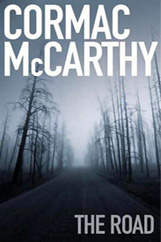 The Road by Cormac McCarthy is a novel of survival in post-apocalyptic America. The world as it was no longer exists. Black ash years later continue to rain down on everything. There are no specifics as to what actually happened to cause this apocalypse, but the few clues the author gives us suggest a nuclear bomb: “The clocks stopped at 1:17. A long shear of light and then a series of low concussions … A dull rose glow in the windowglass” (52). A father and his young son, survivors, are traveling “the road” from their home in the north in expectation of reaching the south, where they expect to survive the winter.
The Road by Cormac McCarthy is a novel of survival in post-apocalyptic America. The world as it was no longer exists. Black ash years later continue to rain down on everything. There are no specifics as to what actually happened to cause this apocalypse, but the few clues the author gives us suggest a nuclear bomb: “The clocks stopped at 1:17. A long shear of light and then a series of low concussions … A dull rose glow in the windowglass” (52). A father and his young son, survivors, are traveling “the road” from their home in the north in expectation of reaching the south, where they expect to survive the winter.
All that they own has been packed into a supermarket cart: blankets, the little food and water they have managed to salvage along the way, what extra clothes they have, anything of use they find in homes or markets that escaped the fires and overlooked by survivors before them. When the novel opens, the pistol the father carries for protection contains three bullets in it. At the end of their journey, it contains only one. He has had to kill in order to survive. And because the survivors of the apocalypse fall into two categories—the good and the bad—he has taught his son how to do what he must if something happens to him: commit suicide. The bad people consist of cannibals, pederasts, all types of evils; yet there must be others like themselves, and he hopes the south will yield those good.
We’re never told the names of any of the characters because each is representative of a member of the surviving larger group.
This novel reminded me of other post-apocalyptic novels I had read, particularly The Stand by Stephen King, an allegory symbolizing the battle between good and evil, in which we are always left with the hope that good will win out. And in this case, just as things get their worst, again there is that hope resurfacing.
Black ash swirls everywhere through their entire journey. Sometimes the snow, no longer white but gray, falls; and soon it, too, is covered with black ash. When they reach the coast, the father’s promise of blue water to his son is dashed by the black ash covering the surface.
Yet the south holds hope of a future. Whatever has caused the apocalypse has left many of the survivors, among them the father, with tuberculosis. His endless cough, full of blood, presages his destiny. The young boy, his son, is a Christ figure, and any hope of a future world lies in him. “He knew only that the child was his warrant. He said: If he is not the word of God God never spoke” (5). And later, after he has had to kill to protect his son, he tells him: “My job is to take care of you. I was appointed to do that by God. I will kill anyone who touches you” (77).
The entire countryside had been scavenged, but almost everywhere they stop—places that had not been completely burned or otherwise destroyed—the father ingeniously manages to find something of substance to keep them going. In one place he drains oil from long ago discarded oilcans to have enough for a lamp he improvises from a bottle and a rag. After all, he has a mission. The boy is his “warrant,” and though it seems he is too ill to last much longer, he must somehow keep the boy alive.
McCarthy manipulates the language so that the mostly staccato sentences and phrases give the reader the impression of dancing, more specifically, of waltzing, thus creating a lightness in the midst of the hopelessness and dangers the two encounter throughout the entire journey. Also, this simple language reemphasizes the fact that the young son, born after the apocalypse, is learning about a world he knows nothing of from the stories his father, his only teacher, tells him. In addition, the short, simple sentences are reminders of their simple goal: stay alive.
The mother, unable to endure any more of the dangers they constantly faced in their efforts to survive, and completely without any hope of survival, had taken her life sometime before. Unable to convince her husband to do the same—as well as take the boy’s life—she had used a small piece of obsidian, leaving the few bullets left in the gun for their protection. When they set out on their journey south, the son never looks back, nor does he speak of his mother. The omniscient point of view with an unknown narrator adds to the suspense, giving the reader very few clues as to how the story will end.
Reviewed by Lee L. Peoples
The Measure of a Man Sidney Poitier
Book Review
The Measure of a Man
Sidney Poitier
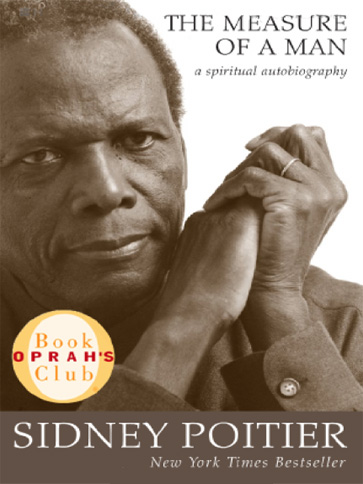 Having always thought of Sidney Poitier as a gifted, consummate actor, I was pleasantly surprised to discover the trials he went through to become that way. A current Oprah’s pick, his memoir,The Measure of a Man, is the story of how a young man with so limited advantages and resources rises to become the consummate actor.
Having always thought of Sidney Poitier as a gifted, consummate actor, I was pleasantly surprised to discover the trials he went through to become that way. A current Oprah’s pick, his memoir,The Measure of a Man, is the story of how a young man with so limited advantages and resources rises to become the consummate actor.
The consummate artist interprets rather than play acts, Poitier learned very early in his career, and in spite of acting lessons, turned to other artists to emulate, while achieving through imagination and daydreams (210). Thus, his outstanding, memorable performance in such movies as Blackboard Jungle, Cry the Beloved Country, Guess Who’s Coming to Dinner, To Sir with Love, and others. Among his many awards for his performances both on stage and in the movies is the Academy Award he received in 1964 for best actor in Lilies of the Field.
With a back and forth movement—moving from the present to the past, then back to the present—the memoir shows how his past shapes or explains his being. This memoir could be called an intellectual study into who Sidney Poitier is, how his past defines his measure as a man.
Sidney Poitier was born on Cat Island in the Bahamas, where he lived until ten and a half years old, when the family, of necessity, moved to Nassau. Until he went to Nassau, the outside world for him did not exist. Cat Island was a small, idyllic island, where the only threats Sidney met were those posed by nature and the strong discipline of his mother and father. Though very poor, his family was close. It was in Nassau that he was introduced to the prejudices toward blacks and the limitations racism placed upon them. Cat Island was idyllic, as opposed to the obvious haves vs. the have-nots of Nassau. He wore clothes made from flour sacks but loved and respected his parents so much he did not make a big deal out of the teasing he took from his schoolmates: “…knowing that my mom and dad were doing the best they could gave me the strength to suck it up and move on” (39).
He dropped out of school by the age of thirteen and was sent away from this environment—friends, even his older brother, were sent away because of the trouble they had gotten into because of the influence of the environment. (On Cat Island, the only dangers he had faced were those posed by nature.) Little Sidney was jailed briefly for stealing corn. So his father sent him to Miami to live with a brother ten years older than he. There, he also encountered race issues but did not let them interfere with what he had chosen for himself; so “the Jim Crow way of life had trouble overwhelming me” (42).
Sidney Poitier never compromised his values, refusing to play parts he did not believe in. Yet, this is exactly what his own race accused him of (118). Of course, he’s angry about what he and other blacks had to endure, but “… I’ve learned that I must find positive outlets for anger or it will destroy me. I have to try to find a way to channel that anger to the positive, and the highest positive is forgiveness” (128).
There are lessons to be learned from this memoir on how to achieve in spite of the obstacles life and society may place in the way, for one’s response is the measure of a man; and I agree that once again Oprah is right on in her selection. For example, hurt over the failure and breakup of his first marriage, he does not fail in fulfilling his father’s legacy: the measure of a man is how well he takes care of his children (181). He is quite proud of his six talented and intelligent daughters he helped raise in spite of his divorce from their mother. Poor though he was, his own father, Reggie Poitier, always took care of his family, and in this respect, as well as others, Sidney chose to emulate him.
I would say “the measure of a man” is one’s response to all of the opposition one is faced with in society, and Sidney Poitier certainly lives up to his measure as a man in all the racial opposition he encountered as a black man on his journey to becoming the consummate actor, beloved by so many.
Reviewed by Lee L. Peoples
Son-Rise – The Miracle Continues
Book Review
Son-Rise – The Miracle Continues
Barry Neil Kaufman
T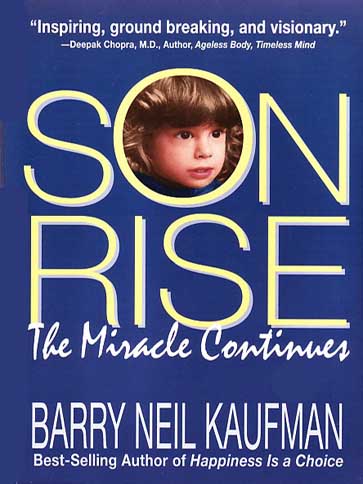 here’s nothing like a true story made into a book, made into a television movie to get one inspired, and Barry Kaufman’s Son-Risedid just that for me. This is the story of a child with autism. Barry and his wife Samahria Kaufman gave birth to Raun, who exhibited all the characteristics of a normal child. He was developing normally, but at four weeks old, Raun battled with an ear infection that spread thoughout his nose and throat, Raun was treated with antibiotics, which caused a severe dehydration, eventually landing him in the hospital for several days. The treatment had severe side effects and the doctors feared he would have permanent hearing loss. Finally, the Kaufmans were allowed to take their infant home. At first, Raun developed normally, but eventually he started exhibiting unusual behavior, giving Samahria and Barry cause for concern. He was detached and shunned all human touch. Raun was eventually diagnosed as severely autistic.
here’s nothing like a true story made into a book, made into a television movie to get one inspired, and Barry Kaufman’s Son-Risedid just that for me. This is the story of a child with autism. Barry and his wife Samahria Kaufman gave birth to Raun, who exhibited all the characteristics of a normal child. He was developing normally, but at four weeks old, Raun battled with an ear infection that spread thoughout his nose and throat, Raun was treated with antibiotics, which caused a severe dehydration, eventually landing him in the hospital for several days. The treatment had severe side effects and the doctors feared he would have permanent hearing loss. Finally, the Kaufmans were allowed to take their infant home. At first, Raun developed normally, but eventually he started exhibiting unusual behavior, giving Samahria and Barry cause for concern. He was detached and shunned all human touch. Raun was eventually diagnosed as severely autistic.
Samahria and Barry went through a series of tests only to be told there was no cure. The best they could hope for was that maybe Raun would eventually learn a few skills, like dressing himself and uttering robotic responses. But eventually he would be institutionalized. Against the odds, Samahria decided to take action, ignoring the doctor’s advice. She decided that she was going to reach her son, no matter what it took. She had no expectations, only acceptance—she wanted to connect with her child. The best way that she knew how to do that was to enter his world in hopes that he would feel safe enough to eventually enter hers.
Samahria spent every waking hour mimicking Raun’s behavior. If he spun a plate, she spun a plate. If he threw his food, she threw her food. If he jumped up and down, so did she. And she did all this in the tiny bathroom of their home. She chose the bathroom because there wasn’t much in there that Raun could destroy, and it was a place where they always had their interaction. Eventually, Raun began to respond. The Kaufman family eventually all got involved, including Raun’s two older sisters, Byrn and Thea. The Kaufmans elicited help from volunteers to get involved with treating their son. And with time, patience, and a few setbacks, Raun began to develop like a toddler and eventually showed no signs of autism.
The doctors who had diagnosed him as autistic were astounded. Caseworkers and teachers of special education programs came to observe Raun’s daily routine. In their opinion, it was a miracle.
What moved me the most about Son-Rise, The Miracle Continues is the amount of love this family had for their child. They gave up a lot to be able to connect with him and to be in his world. They also took a big chance, not knowing the outcome. Their methods were unorthodox, but safe. There were no drugs involved, only dietary changes.
The Kaufmans eventually created their own institute, showing parents how to work with their autistic children—the main medicine being unconditional love and acceptance. And to this day, The Option Institute has helped thousands of children rise above autism, as well as a host of other related and non-related disorders. Raun, who is now completely recovered, is the director of The Option Institute.
Son-Rise was first published over thirty years ago. A television movie about autism was based on that book. It offered hope to those families who were told there was no cure for autism. The newly published Son-Rise, The Miracle Continues has three parts. The first part is about the struggle and the eventual success of Raun Kaufman. Part two of this book explores Raun’s development from childhood at age four to becoming a young adult.
Part three interviews five other families who went through similar circumstances and were victorious over their child’s diagnosis. All five families have inspiring success stories, and their once unreachable children are now happy, thriving, and functional beings. These testimonies offer hope along with the limitless opportunities.
This is a must read. I read the 346-page book from cover to cover in just 48 hours, unable to put it down. Autism is a growing epidemic, and could affect you or someone you know. Son-Rise, The Miracle Continues teaches us to be more accepting of people’s differences. It teaches us to love unconditionally, and it is a true testimony to what the human mind is really capable of.
Son-Rise, The Miracle Continues can be purchased at most bookstores everywhere.
Reviewed by Kaylene Peoples
Recommended Reading: One Child by Torey L. Hayden, Copyright 1980

 When special-education teacher Torey Hayden wrote her first bookOne Child almost two decades ago, she created an international bestseller. Her intensely moving true story of Sheila, a silent, profoundly disturbed little six-year-old girl, touched millions. From every corner of the world came letters from readers wanting to know more about the troubled child who had come into Torey Hayden’s class as a “hopeless case,” and emerged as the very symbol of eternal hope within the human spirit.
When special-education teacher Torey Hayden wrote her first bookOne Child almost two decades ago, she created an international bestseller. Her intensely moving true story of Sheila, a silent, profoundly disturbed little six-year-old girl, touched millions. From every corner of the world came letters from readers wanting to know more about the troubled child who had come into Torey Hayden’s class as a “hopeless case,” and emerged as the very symbol of eternal hope within the human spirit.
The Tiger’s Child by Torey L. Hayden, Copyright 1995, the sequel toOne Child.
NONFICTION
Description by Amazon.com
The Good Eater – Author Ron Saxen
The Good Eater
Ron Saxen
 The Good Eater by Ron Saxen, due to be published in March, is the true story of a male model’s struggle with binge eating. This is a problem more common among women, but this young man at a very early age found solace from his problems by eating, and as a result, always struggled with a weight problem.
The Good Eater by Ron Saxen, due to be published in March, is the true story of a male model’s struggle with binge eating. This is a problem more common among women, but this young man at a very early age found solace from his problems by eating, and as a result, always struggled with a weight problem.
Ron’s binge-eating roots, like most people with emotional problems, lay in his past. He was the third child of a very strict, tyrannical father and a mother who was a religious fanatic. He had two older brothers and two younger sisters.
His binge eating started at thirteen years old, when waiting for his father to come home and punish him for the wrongs of the day his mother had written down in her notebook, he began to eat the chocolate from the school sales he had stored in his closet. And he felt better immediately! From then on, to placate himself, he ate. Food gave him pleasure. He had learned that anything he could do to please his parents and maintain the “fragile” peace was a good thing. Winning food contests at the dinner table—finishing before everyone else—was one of those things that pleased his father and kept the peace, staving off the punishments and whippings. And he loved food!
At sixteen, his father left home; and since his two older brothers had moved out, he became the man of the house. He went on his first diet; but since his answer to every problem was eating, of course, he always returned to eating for comfort. He became obese, and for the next years struggled with his weight.
However, Ron was very good looking, and in 1984, at the low end of his yo-yo dieting (260-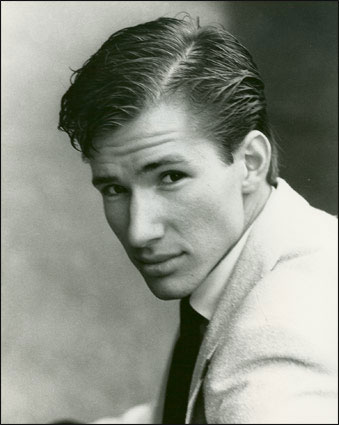 225), he was asked a number of times if he was a model. He was twenty-one years old. Encouraged to try modeling, he lost enough weight to qualify as a model. He tried out and was very successful, until confronted with a problem and returned to binge eating to solve it, or at least to make himself feel better. He put the weight on again and gave up modeling. He tried being a comedian, writing acts and performing them on stage. Eventually, failing at that, having now received his college degree, he tried the Marine Corps’ Officers Candidacy School. He hoped that being a Marine would magically erase his past and solve all of his problems. When this failed, he tried selling insurance, then using drugs . . .one attempt after another to control his eating and thus his weight.
225), he was asked a number of times if he was a model. He was twenty-one years old. Encouraged to try modeling, he lost enough weight to qualify as a model. He tried out and was very successful, until confronted with a problem and returned to binge eating to solve it, or at least to make himself feel better. He put the weight on again and gave up modeling. He tried being a comedian, writing acts and performing them on stage. Eventually, failing at that, having now received his college degree, he tried the Marine Corps’ Officers Candidacy School. He hoped that being a Marine would magically erase his past and solve all of his problems. When this failed, he tried selling insurance, then using drugs . . .one attempt after another to control his eating and thus his weight.
See how, with some lifestyle changes and the help of friends, Ron finally, years later, gets his eating under control, and as a result, his life. This memoir, at times light and funny, at others dark and sad, reads like a novel, with a plot whose conflict I kept wanting to be resolved happily for Ron so that he could stop bingeing and keep his weight under control in order to get back to his modeling. You, too, will find it interesting and moving.
The following is from the National Institute of Diabetes and Digestive and Kidney Diseases (http://www.athealth.com/Consumer/disorders/Bingeeating.html):
Although it has only recently been recognized as a distinct condition, binge eating disorder is probably the most common eating disorder. Most people with binge eating disorder are obese (more than 20 percent above a healthy body weight), but normal-weight people also can be affected. Binge eating disorder probably affects 2 percent of all adults, or about 1 million to 2 million Americans. Among mildly obese people in self-help or commercial weight loss programs, 10 to 15 percent have binge eating disorder. The disorder is even more common in those with severe obesity.
Binge eating disorder is slightly more common in women, with three women affected for every two men. The disorder affects blacks as often as whites; its frequency in other ethnic groups is not yet known. Obese people with binge eating disorder often became overweight at a younger age than those without the disorder. They also may have more frequent episodes of losing and regaining weight (yo-yo dieting).
If you think you might have a problem with BED, there are many programs to help you. You can find help first by simply doing a search on the Internet to learn just how serious is your eating problem and get help early, unlike Ron, who took twenty-one years of trying to solve his own problem alone before he got help. Recognizing he had a serious problem, as he tried one thing after another only to fail again, I kept screaming at him: Get some professional help!
You may visit Ron Saxen online at www.ronsaxen.com.
Reviewed by Lee L. Peoples

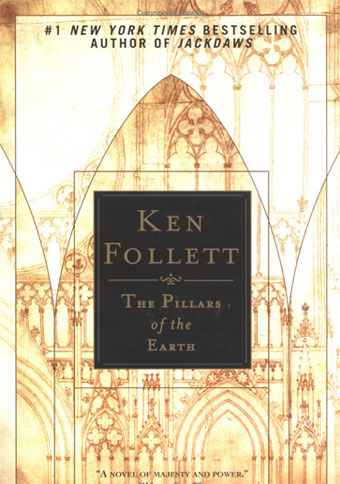
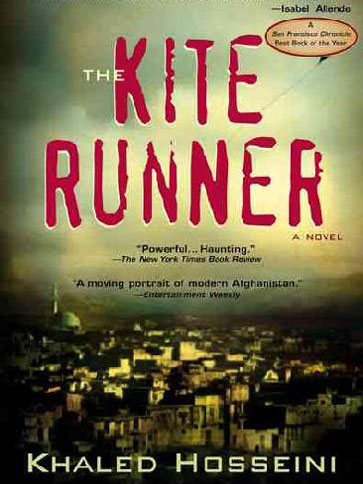
 In spite of having fled his country, the author’s love of his country is clearly evident in both of his books. In this book in particular, his story of two women not only exhibits his love for his country but also his respect for women and their rights. Mariam and Leila, both forced into marriage to a much older man, first meet as rivals in a polygamous marriage but become the closest of friends and each other’s protector from their abusive husband.
In spite of having fled his country, the author’s love of his country is clearly evident in both of his books. In this book in particular, his story of two women not only exhibits his love for his country but also his respect for women and their rights. Mariam and Leila, both forced into marriage to a much older man, first meet as rivals in a polygamous marriage but become the closest of friends and each other’s protector from their abusive husband.
